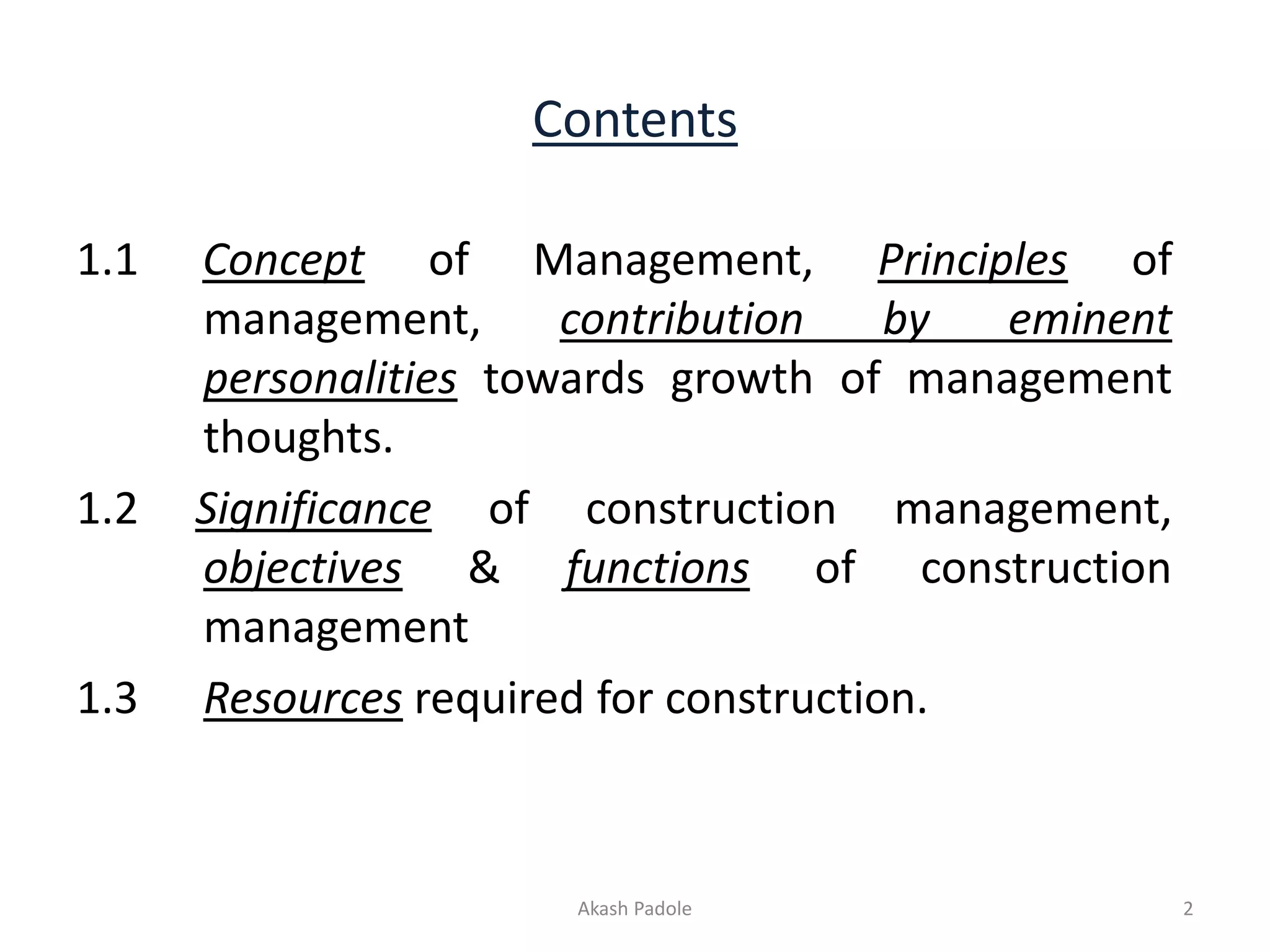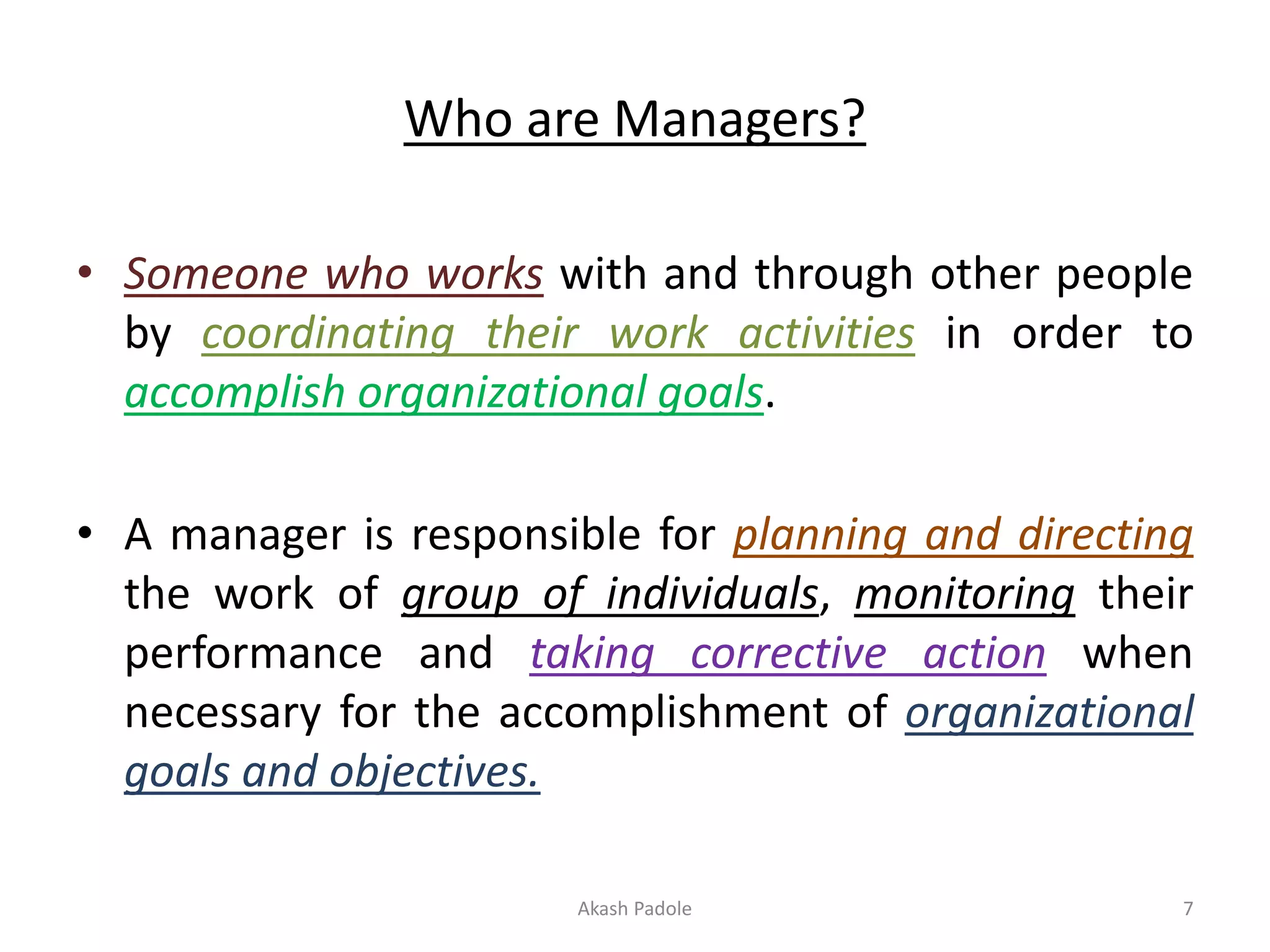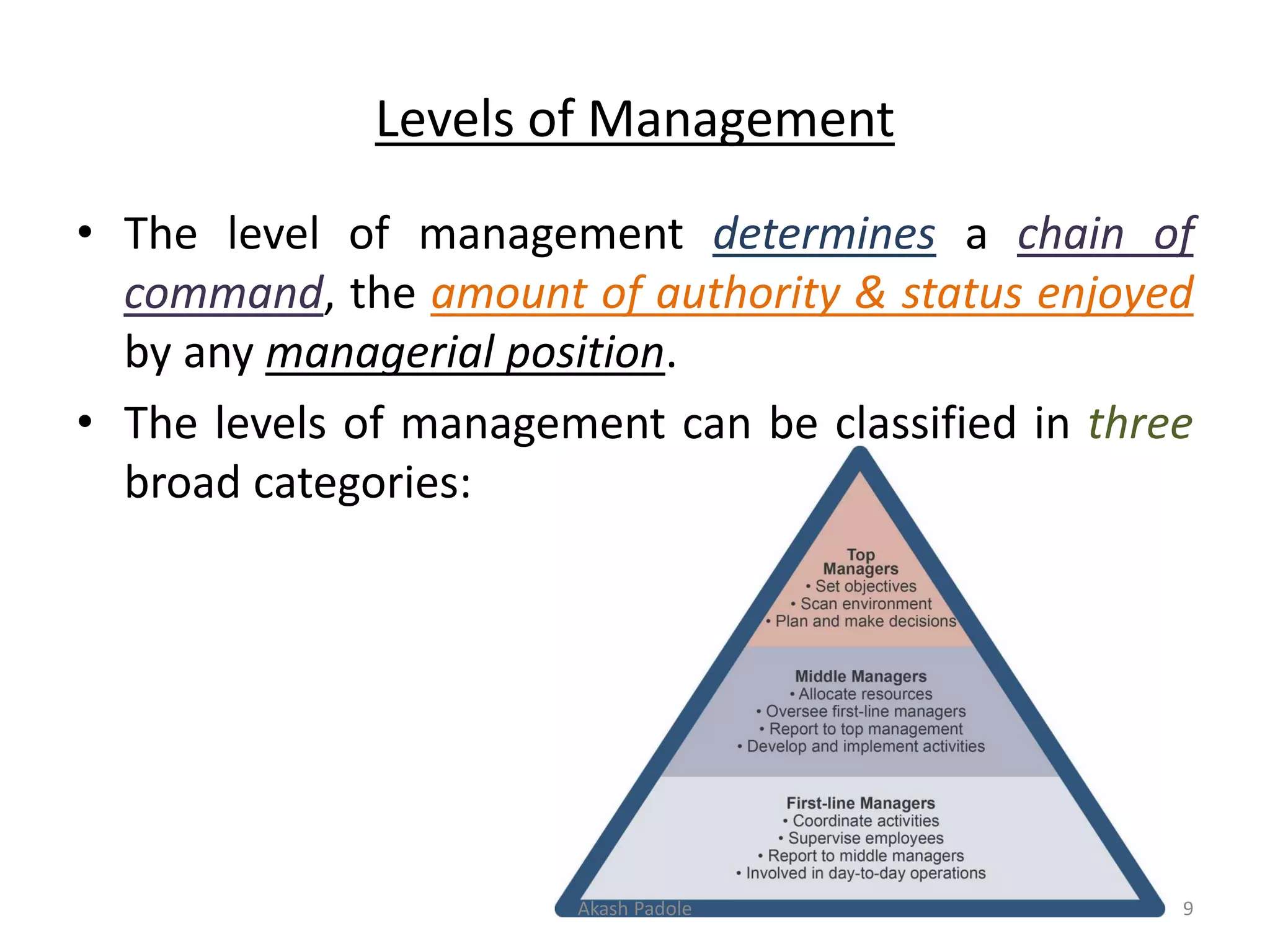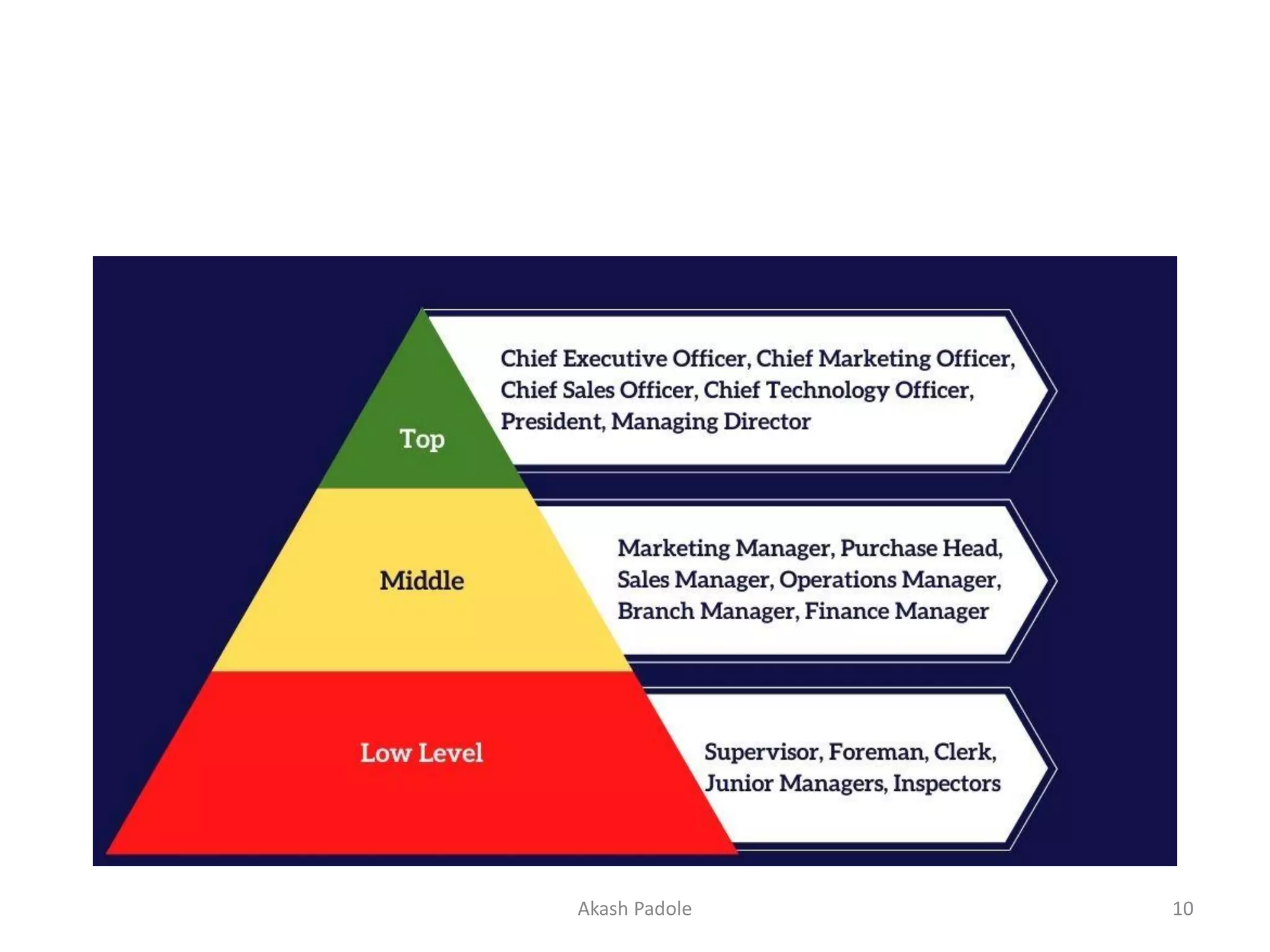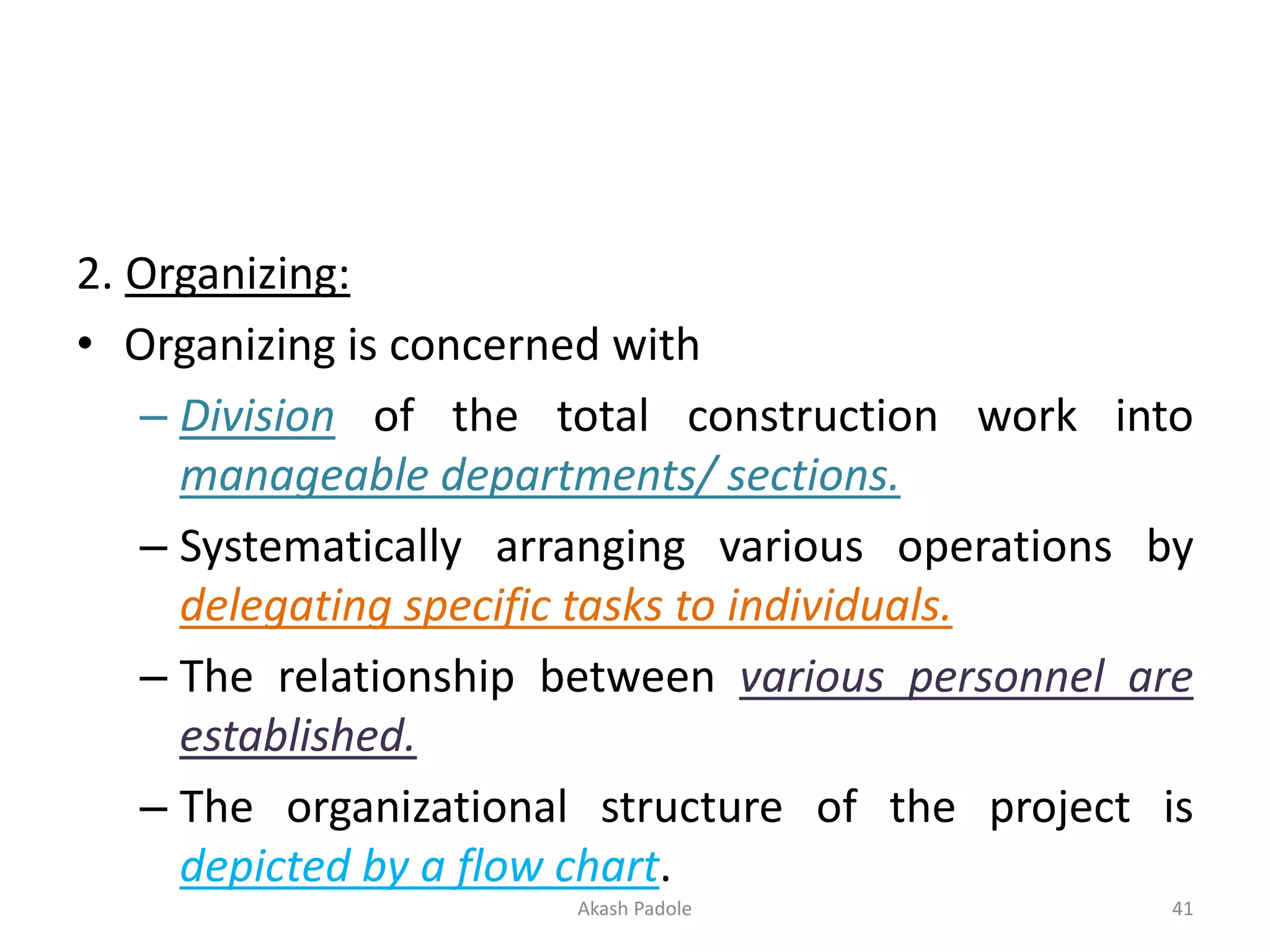The document provides an overview of construction management, outlining its significance, objectives, and functions within the context of civil engineering. It discusses the roles of managers at various levels, principles of management proposed by prominent thinkers, and essential resources needed in the construction industry. Furthermore, it emphasizes the need for effective planning, organizing, staffing, leading, and controlling to achieve project success.

